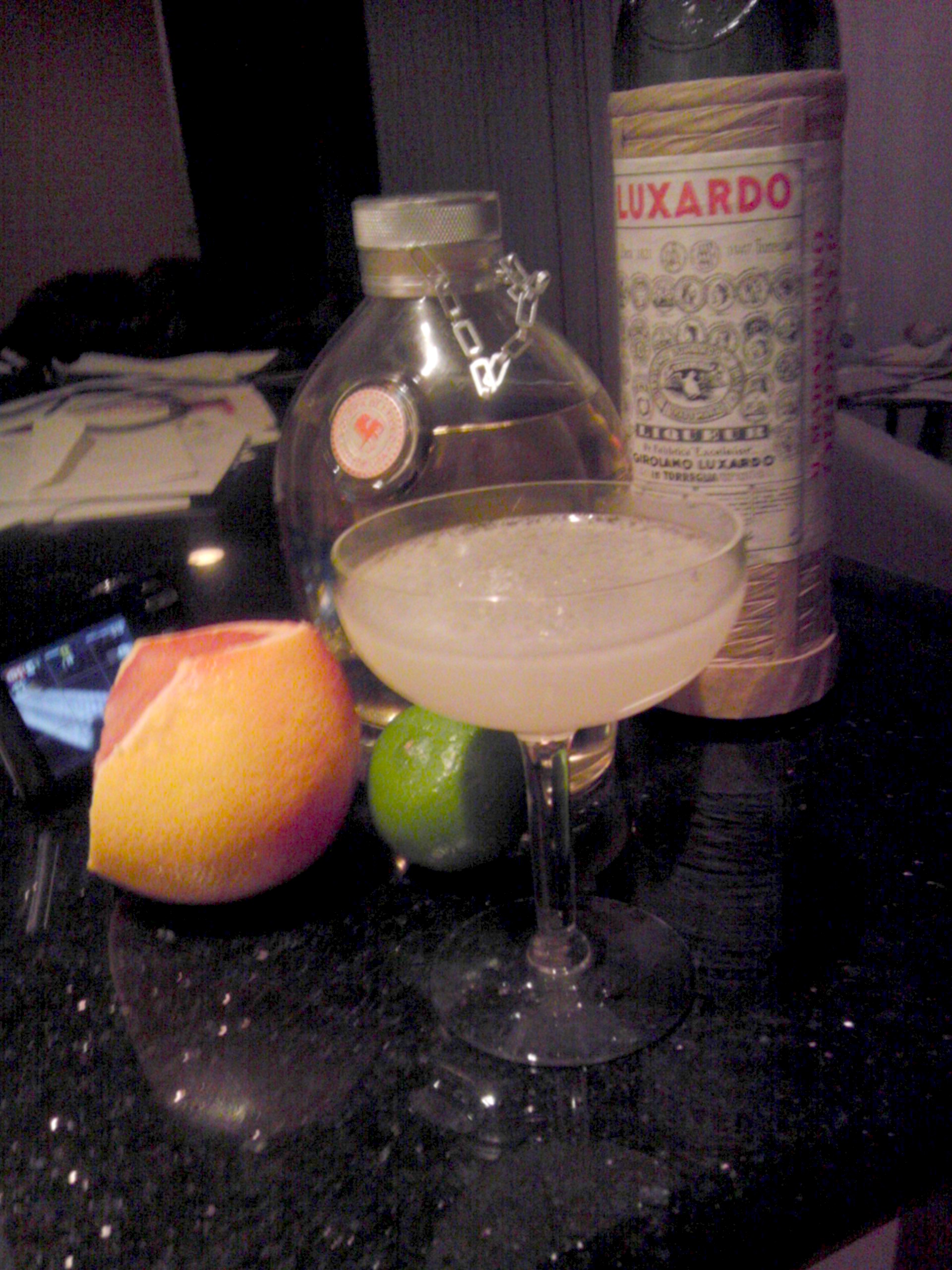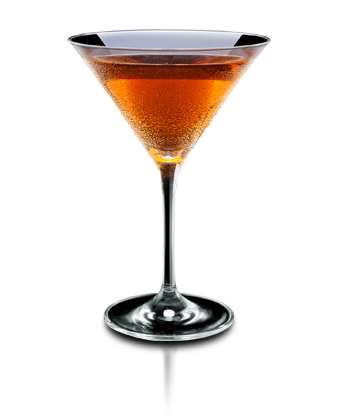Drink of the Week: The Pilar Daiquiri
 So, the first thing you’re likely to notice about today’s drink is that there’s nothing remotely Irish or St. Patrick’s Dayish about it. I admit it — I prepare these posts at least a week or so ahead, and it’s sometimes easy to get a bit mixed up about the calendar. Also, I have to admit, I don’t hang out in bars all that much — shocking, yes, I know — and, even if I did, the Irish community here in L.A. isn’t exactly as prominent as if I were in Boston or New Orleans or New York. You get a lot more reminders about the coming of Cinco de Mayo down here than St. Paddy’s Day.
So, the first thing you’re likely to notice about today’s drink is that there’s nothing remotely Irish or St. Patrick’s Dayish about it. I admit it — I prepare these posts at least a week or so ahead, and it’s sometimes easy to get a bit mixed up about the calendar. Also, I have to admit, I don’t hang out in bars all that much — shocking, yes, I know — and, even if I did, the Irish community here in L.A. isn’t exactly as prominent as if I were in Boston or New Orleans or New York. You get a lot more reminders about the coming of Cinco de Mayo down here than St. Paddy’s Day.
So, rather than trying to trump up a Irish connection that’s complete blarney, I’ll just straight up admit that this week’s really terrific drink is mostly Cuban in origin and comes to us from the promotional team behind a really outstanding pair of new rums with a pedigree that extends to the modern day heirs of no less than daiquiri drinker #1, Papa Hemingway himself. He was said to love a good daiquiri. If so, he would definitely have loved this one.
The Pilar Daiquiri
1 1/2 ounces Papa Pilar’s Blonde Rum
3/4 ounce fresh lime juice
1/2 ounce fresh grapefruit juice
1 teaspoon maraschino
1 teaspoon sugar
Combine all the ingredients in a cocktail shaker. Maybe stir a bit to dissolve the sugar (not needed if you’re using C&H Superfine as I do). Shake and strain into a cocktail glass. Toast Papa Hemingway and all writers, including the less tortured ones.
****
Now, folks, you should understand that when freebies greet me, I feel both grateful and slightly corrupted. Also, many times we get recipes that, while quite good, could actually work with any number of brands. Nevertheless, this little number really does seem to be expressly made to complement the qualities of the dang remarkable Papa Pilar’s Blonde.
The combination of flavors from the grapefruit and maraschino liqueur in addition to the more traditional lime juice and sugar, really blends together with this uniquely flavorful blonde rum, which is delightfully heavy on notes of molasses and sports a bit of an oceanic twang. Honestly, unless you’ve got a similar blonde rum around (are there any?) I’d stick with the simpler original daiquiri recipe I offered many moons ago.
On the other hand, if you’re going to make the investment in Papa Pilar’s, and I certainly would encourage that, I demand you make this drink right away — and yeah, that includes shelling out extra for the maraschino liqueur. That one little teaspoon of slightly bitter cherry deliciousness is important, as I learned when I accidentally cut the proportion of in half while making a two PP daiquiris for myself and a very old friend who had stopped by. Cutting the amount from one teaspoon to merely 1/2 a teaspoon threw off the drink’s balance and the result was less balanced and very tart than I would prefer, though the friend was polite about it. Every drop of maraschino is sacred but, if you need to save money, you can go with the cheaper Maraska Maraschino and leave the Luxardo for fools like me who can’t resist luxy things.
This is a drink you want to make right. It’s refreshing and nearly perfectly balanced bewteen sweet, tart, and the bittterness of the grapefruit. It’s A-1, even if I can’t try to fob it off as Papa O’Hemingway’s Irish Brew or what not.
You can follow us on Twitter and Facebook for content updates. Also, sign up for our email list for weekly updates and check us out on Google+ as well.

 Have you ever really had the last word in an argument? Lord knows I haven’t….and it’s so very definitely not for a lack of words, or for a lack of arguing. Ask anyone who knows me well, I love to argue and I think it’s entirely possible to disagree without being disagreeable. In fact, I barely have to disagree with you at all to, nevertheless, disagree. You can have pretty much identical politics, taste in cultural matters,
Have you ever really had the last word in an argument? Lord knows I haven’t….and it’s so very definitely not for a lack of words, or for a lack of arguing. Ask anyone who knows me well, I love to argue and I think it’s entirely possible to disagree without being disagreeable. In fact, I barely have to disagree with you at all to, nevertheless, disagree. You can have pretty much identical politics, taste in cultural matters,  It’s not exactly a secret around here that I greatly lean towards cocktails as opposed to drinking even truly fine spirits straight. Still, it’s fairly obvious even to me why the best cognacs and other high end brandies are among the most popular of all beverages to enjoy neat. Certainly that applies to the
It’s not exactly a secret around here that I greatly lean towards cocktails as opposed to drinking even truly fine spirits straight. Still, it’s fairly obvious even to me why the best cognacs and other high end brandies are among the most popular of all beverages to enjoy neat. Certainly that applies to the  As start to I write this, I’ve just finished watching the third presidential debate and I’m contemplating the power of the Etch-a-Sketch. Just as Mitt Romney somehow made a significant slice of the electorate forget everything that happened prior to debate #1, now left-leaners like your humble tippler are hoping debates #2 and #3 will make everyone forget that first one.
As start to I write this, I’ve just finished watching the third presidential debate and I’m contemplating the power of the Etch-a-Sketch. Just as Mitt Romney somehow made a significant slice of the electorate forget everything that happened prior to debate #1, now left-leaners like your humble tippler are hoping debates #2 and #3 will make everyone forget that first one. The Aviation is one
The Aviation is one 








